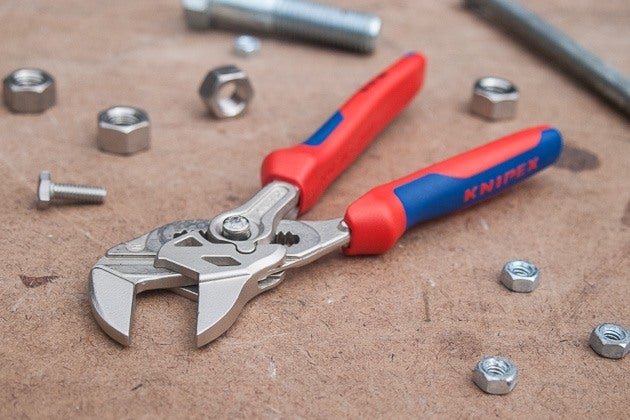Types of Adjustable Wrench – An adjustable spanner, adjustable wrench, or crescent wrench is an open-end tool that may be used with a variety of various-sized fastener heads by simply adjusting the screw that moves the moveable jaw.
On the Linquip website, among the many options available to you, you will find all the information you need to know about the Adjustable Wrenches, as well as information regarding this marketplace. You can count on Linquip to provide you with as much general and reliable information about this topic, whether you’re a professional or a customer looking for a proper company. We recommend you review a list of all Adjustable Wrench Products available in Linquip. You can also be encouraged to visit Adjustable Wrench for Sale and find the most suitable device based on your applications and demands.
How to Measure Adjustable Wrenches
Let’s speak about how adjustable wrenches are measured first, and then we can talk about the many varieties of adjustable wrenches.
The size of the item that a standard wrench will fit on is used to determine its size. For example, a 5/8-inch wrench may be used on bolts and nuts that are 5/8 of an inch in size. Simple.
But adjustable wrenches are a little more complicated. A single measurement won’t adequately describe the capabilities of the wrench because they’ll be used on objects of varying sizes. Instead, the length of the handle is used to gauge most adjustable wrenches. As a result, an 8-inch adjustable wrench has an 8-inch handle, while a 12-inch adjustable wrench has a 12-inch handle.
It does provide some important information regarding the wrench’s size, but it doesn’t provide much information about the wrench’s capabilities. The minimum and maximum sizes of the jaws are therefore typically listed by manufacturers along with them, although for some types of wrenches, they simply specify the maximum jaw opening size. For instance, the maximum capacity of a 10-inch crescent wrench may be 138 inches.

Different Types of Adjustable Wrenches
Crescent Wrench
The all-purpose tool of the wrench world is the adjustable crescent wrench. They are ideal for use with practically any kind of nuts and bolts. One side of the jaw is fixed, while the other may be easily changed by rotating a dial located just below the wrench’s head. This enables you to adjust the jaw’s opening or closing to get the ideal fit. The most typical kind of adjustable wrench is the crescent wrench. They’re also among the most adaptable because you may use them for a variety of tasks, including home and automotive maintenance. For a better fit, a stronger hold on the nut or bolt, and more leverage, they have angled jaws. These wrenches are available in a huge variety of sizes, ranging from 4 inches to 4 feet! Yet, most users won’t require one larger than 12 inches.
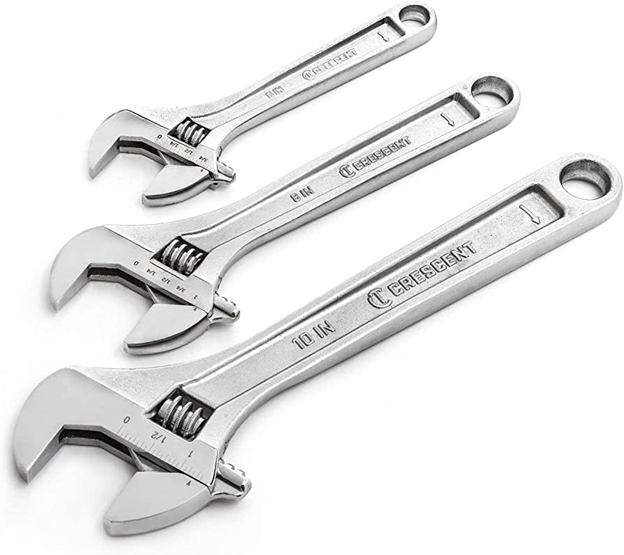
Plumber’s Wrench
An adjustable slip-nut wrench is another name for a plumber’s adjustable wrench. It resembles a crescent wrench in a few ways. While the opposite side of the jaw may be changed to match a variety of sizes, one side is fixed. Yet, a plumber’s wrench has straight jaws, whereas a crescent wrench has slanted jaws. Moreover, plumber’s wrenches sometimes have shorter handles and considerably more flexibility. Unlike adjustable crescent wrenches, they also contain a locking nut that enables you to lock the jaw into a certain position. These wrenches are ideal for tightening and loosening locknuts, slip nuts, and basket strainer nuts. Given that they are all utilized for plumbing, plumber’s wrenches don’t exist in as many sizes as crescent wrenches. Typically, their jaws range from 1-3 inches, making them ideal for the majority of under-cabinet sink work.
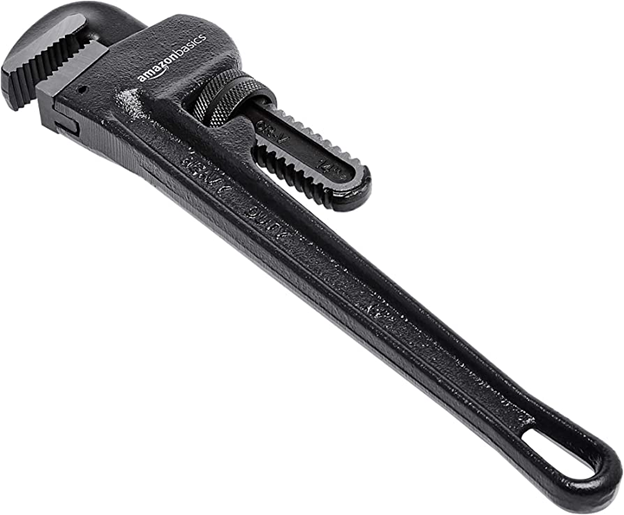
Pipe Wrench
A pipe wrench will be familiar to anyone who works with pipes. They are hefty adjustable wrenches that offer a firm hold on any pipe thanks to their slightly slanted jaws. For tightening and loosening pipes, they work perfectly. The angle and the teeth will catch hold of the pipe when the jaws are closed around it, giving you tons of leverage to spin the pipe. There are pipe wrenches of every size, from little to enormous. For instance, 48-inch pipe wrenches are capable of handling pipes up to 5 inches in diameter. Of course, the typical individual would never require such a large wrench. A lighter wrench between eight and 24 inches ought to work for the majority of people. A 24-inch pipe wrench can work with pipes that are 112 to 212 inches in diameter, whereas an 8-inch pipe wrench can handle pipes that are 1/4 to 3/4 inches in diameter.
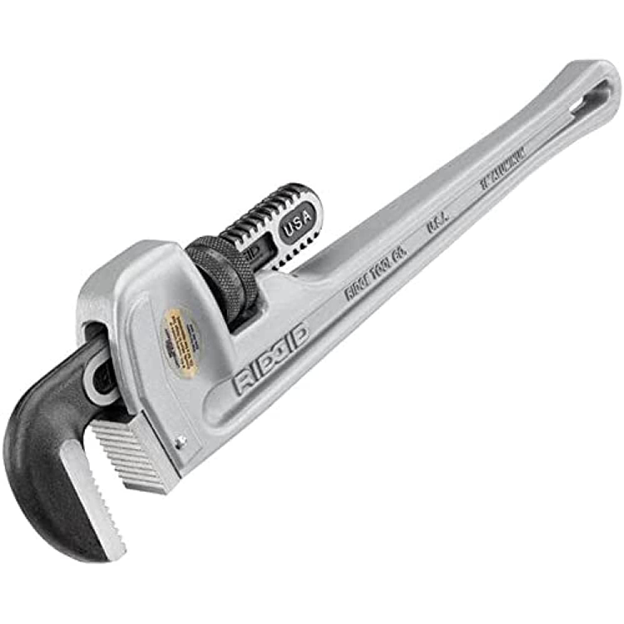
Multi-Angle Pipe Wrench
A multi-angle pipe wrench is, as the name implies, a pipe wrench with a changeable head angle. This makes it considerably simpler to fit into small areas, which plumbers frequently encounter. This wrench resembles a regular pipe wrench except for the tilted head. While they are not as big as ordinary pipe wrenches, multi-angle pipe wrenches exist in a variety of sizes. The majority of multi-angle pipe wrenches are between 8 and 12 inches long since they are particularly designed for working in confined locations.
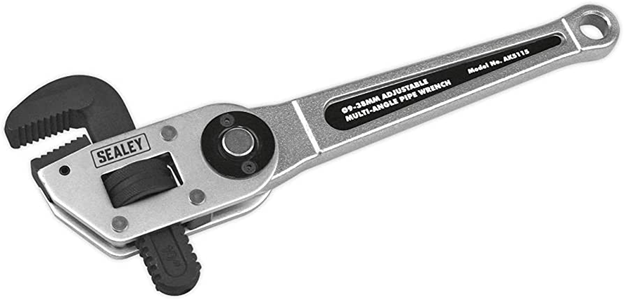
Self-Adjusting Pipe Wrench
You must turn the dial on a normal adjustable pipe wrench to modify the size of the jaws until they are precisely the proper size for the pipe you are dealing with. This often entails mounting the wrench on the pipe, measuring the size, removing it, making the necessary adjustments, and repeating the process until it is perfect. It requires two hands and can be laborious. But, because self-adjusting pipe wrenches are spring-loaded, you can simply and rapidly modify their size with only one hand, which will save you both time and aggravation. Self-adjusting pipe wrenches are only available in a few sizes on the lower end of the range, spanning from around 8 to 15 inches, exactly as multi-angle pipe wrenches. For comparison, the typical jaw capacity of a 12-inch self-adjusting pipe wrench is 5/8–1 1/2 inches.
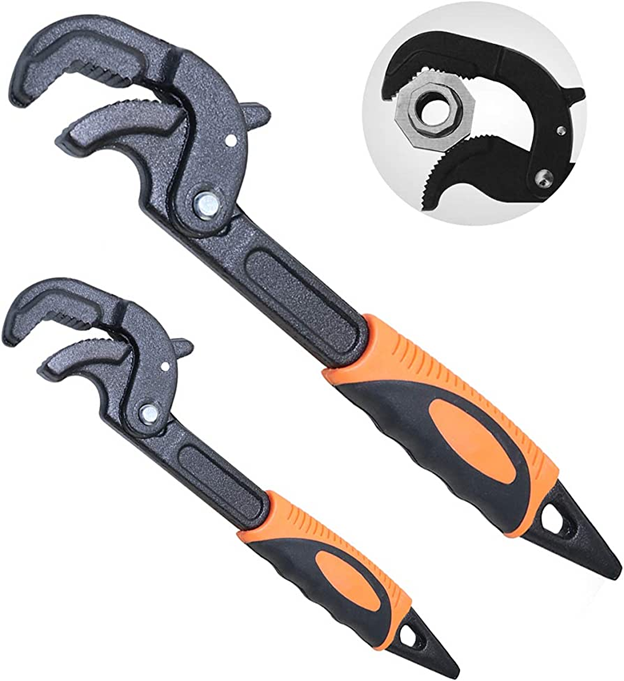
Swedish Pipe Wrench
A set of vice-grip pliers and a Swedish pipe wrench have a very similar appearance. They quickly adjust by simply moving the handle’s lower section up until the jaws are tightly closed, then locking them in place. Although their larger size makes it more difficult to fit them into small spaces, they offer good grip and effective productivity. They are frequently employed for car maintenance, such as the removal of tie rod ends. They only cover a few diameters, but they may be used on pipes like a standard pipe wrench. The majority of Swedish pipe wrenches are between 10 and 16 inches long and can handle pipes that are no larger than 2 inches in diameter.
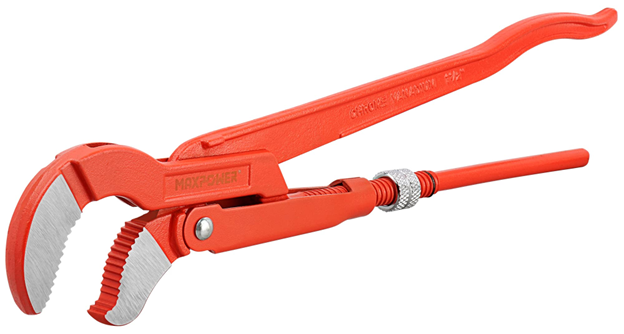
Monkey Wrench
Although many people have heard of monkey wrenches, not everyone is familiar with what they are. While there are some obvious distinctions, they resemble pipe wrenches in appearance. A monkey wrench can fit in smaller spaces since it is more streamlined. Moreover, it has straight jaws as opposed to the inclined jaws of a pipe wrench. Sliding automotive wrenches are another name for monkey wrenches. The name, however, has a long history. The monkey wrench got its name because sailors called tiny tools with specialized functions “monkeys” in the 1800s. You shouldn’t use a monkey wrench as a pipe wrench because the hardened metal in the jaws can quickly destroy pipes. They provide lengthy handles for reaching into equipment and vehicles and are ideal for use with nuts and bolts. Although some industrial-sized monkey wrenches can be up to 4 feet long, the majority are between 8 and 18 inches long.
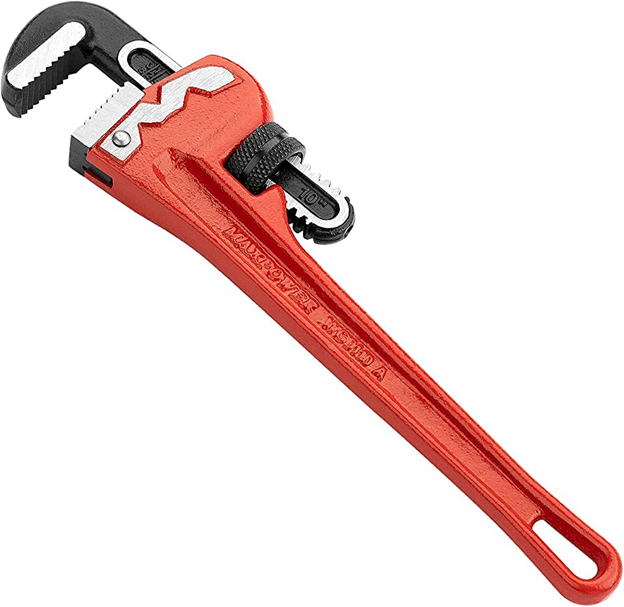
Basin Wrench
Plumbers use basin wrenches to work on supply lines, drains, and faucet bolts. They feature expanded lengths, so the user may operate without having to crouch down within a cabinet. Similar to the body, the head is quite compact, making it easy to squeeze into small areas. While some longer ones can be up to 17 inches long, most basin wrenches are only approximately 12 inches long. Some even have retractable handles that you can change in length to fit the task.
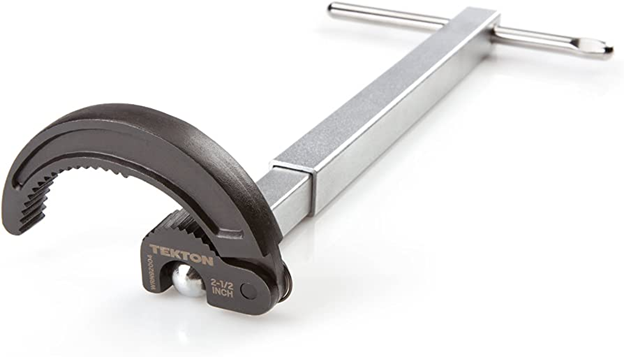
Strap Wrench
Any round object may be tightened or loosened using a strap wrench. They are often measured by the length of the strap, which can range from 6 inches to 3 feet in length. As the strap is often composed of rubber or cotton, the surface you are clutching won’t be harmed. They may be applied to a variety of items, including pipelines and oil filters.
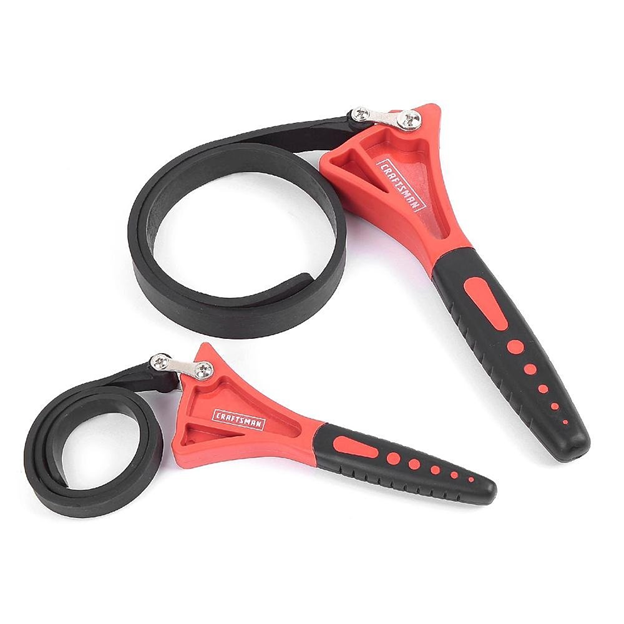
Chain Wrench
Strap wrenches and chain wrenches are extremely similar. They have a lengthy chain that you can use to tighten or loosen an object. For a secure grasp, the chain locks back into the tool. The item your chain is wrapped around may then be turned by pushing the handle. As the chain is composed of metal, using a chain wrench on a delicate surface can harm it. Chain wrenches are sized according to the length of the chain, just as strap wrenches are. The chain typically ranges in length from 12 to 24 inches; however, there are some greater sizes available.
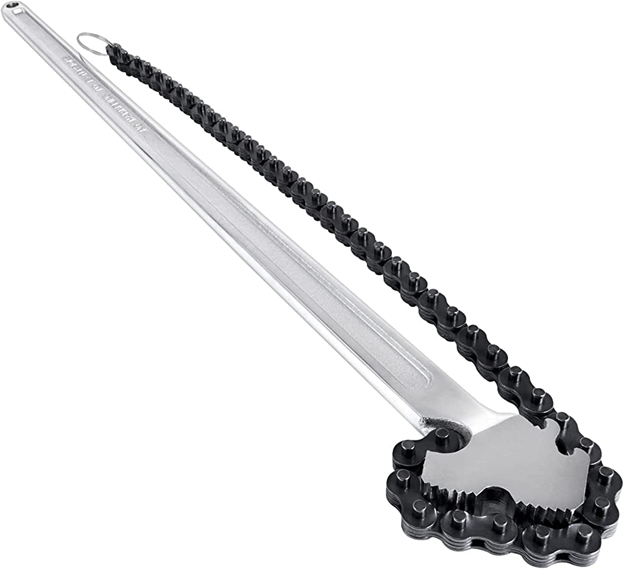
Lock-Nut Wrench
The majority of the wrenches we’ve discussed thus far are versatile. But lock-nut wrenches are designed especially for tightening or loosening the lock nuts on strainer baskets found beneath sinks. They feature jaws that are spring-loaded and will automatically change size to fit most nuts. A lock-nut wrench’s usual size is 12 inches.
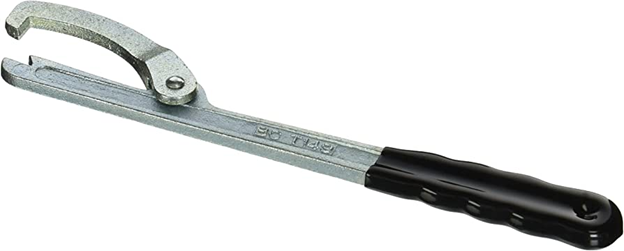
Adjustable Spanner Wrench
The application of spanner wrenches is highly specialized. These nuts are used to tighten and loosen side-slot nuts. They are on collars, lock nuts, and bearings. To tighten the wrench around the nut, they feature a pin that glides into the slot. These wrenches are sized according to the width of their jaws. They will often have a span of 1 to 3 inches.
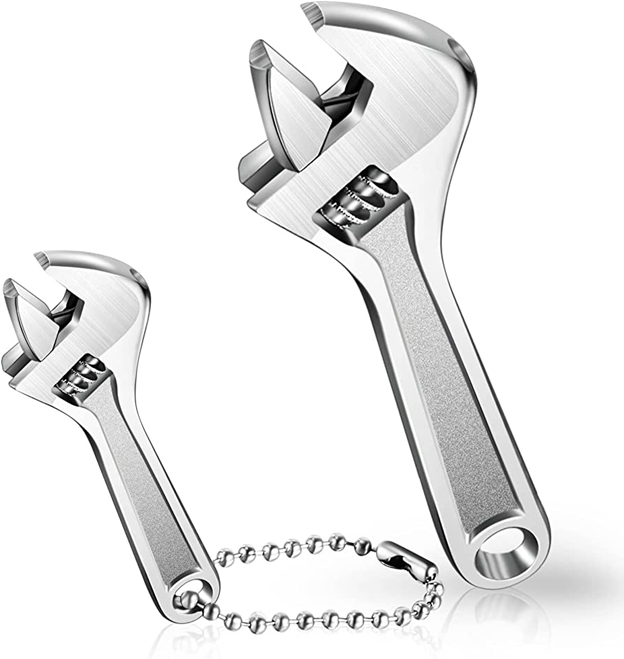
Hex Wrench
Hex wrenches operate quite similarly to pipe wrenches. Nonetheless, because of its hex shape and angled head, the wrench is ideal for working on drain bolts on bathtubs and sinks. Although there are longer ones, the majority are between 8 and 12 inches. The jaw opening of a typical 10-inch hex wrench ranges from around 1 inch to 2 1/2 inches.
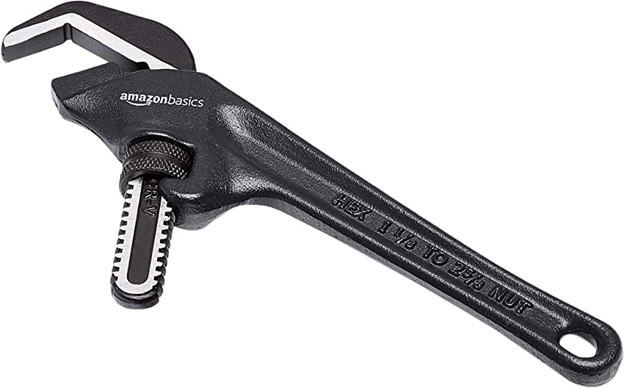
FAQs about Types of Adjustable Wrench
What are the types of adjustable wrench tools?
A tool that may be used to loosen or tighten a nut or bolt is an adjustable wrench, also known as an adjustable spanner or an adjustable crescent. It features an adjustable “jaw,” which is the portion where the nut or bolt inserts.
When should an adjustable wrench be used?
Although they are frequently used to tighten and loosen fastenings of all sizes, adjustable spanners are employed in a range of industries for a variety of tasks. The beauty of them is that you can use one tool on many fasteners of various sizes.
What is the limitation of adjustable wrenches?
Several sizes of fasteners may be tightened with an adjustable wrench. Because it is less secure than a fixed-size wrench, it can easily cause you harm or harm the fastening. Only in cases where a wrench of the proper size is unavailable can an adjustable wrench be used.
Conclusion
You may acquire all the details you want about the Adjustable Wrench and details about this market on the Linquip website, one of the numerous possibilities available to you. Whether you’re a professional or a client seeking for a reputable business, you can rely on Linquip to give you as much basic and trustworthy information on this subject. We advise you to look through the whole range of Adjustable Wrench Experts and take advice from our professionals. If you need any services required for your product, you can count on Linquip and visit Adjustable Wrench Services.
Download PDF for Types of Adjustable Wrench
You can download the PDF format of this post from the link provided here.
Buy Equipment or Ask for a Service
By using Linquip RFQ Service, you can expect to receive quotations from various suppliers across multiple industries and regions.
Click Here to Request a Quotation From Suppliers and Service Providers
Read More on Linquip
- 6 Types of Pipe Wrenches + Images: Clear Guide
- 42 Types of Wrenches + Guide for Choosing a Wrench
- 12 Types of Industrial Sewing Machine + Advantages
- 15 Types of Wrench Sets and Their Features
- Different Types of Socket Wrench: Clear Guide
- How to Use a Socket Wrench? A Complete Guide
- 27 Types of Plumbing Tools + Table of Characteristic & Usage
- The 10 Best Torque Wrenches + PDF & Buying Guide
- How to Use a Torque Wrench? (Working Principle & Types)
- The 9 Best Cordless Impact Wrenches
- 17 Types of Ratcheting Wrenches + Their Characteristics & Usages
- Different Types Of Screw Heads: A Practical Guide
- 27 Types of Screwdrivers + Names (Comprehensive Guide)
- Different 5 Types of Drill Bits for Wood: a comprehensive guide
- Types of Drill Bits for Metal: Comprehensive Guide
- 3 Types of Crimping Tools + Name & Their Uses
- 17 Types of Hinges and Hinge Materials: A Complete Guide
- 9 Types of Blind Rivets + Working Principle & Applications
- Types of Electrical Wire + Application (Complete Guide)
- Different Types of Bolt Heads + Benefit of Bolts and Nuts
- Different 5 Types of Fasteners: A Practical Guide
- 11 Types of Industrial Chains + Their Features and Applications
- 8 Types of Scissors + Table of Characteristics and Usage
- 11 Types of Hand Tools And Their Usage
- 8 Types of Abrasives + Benefits & Usage

